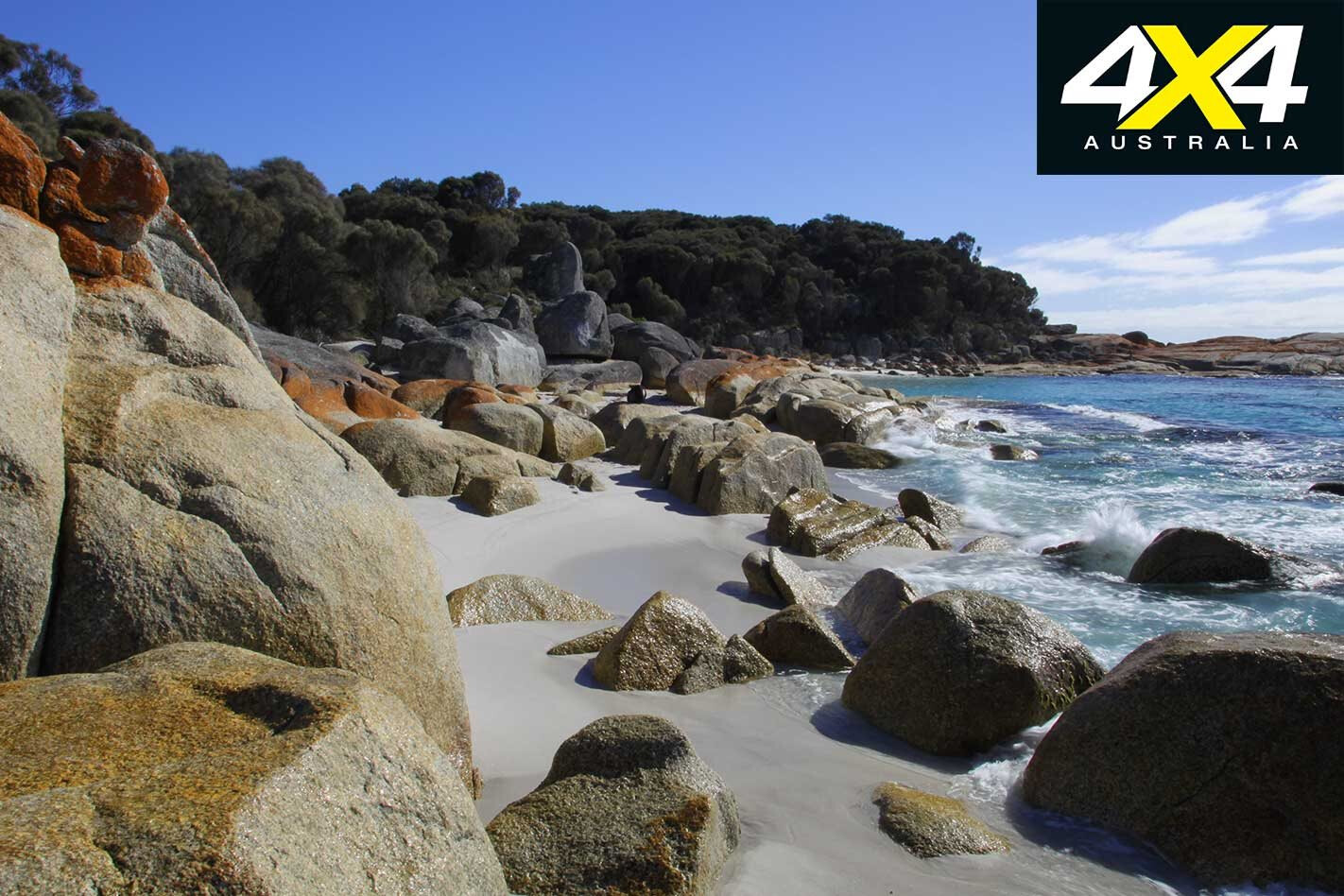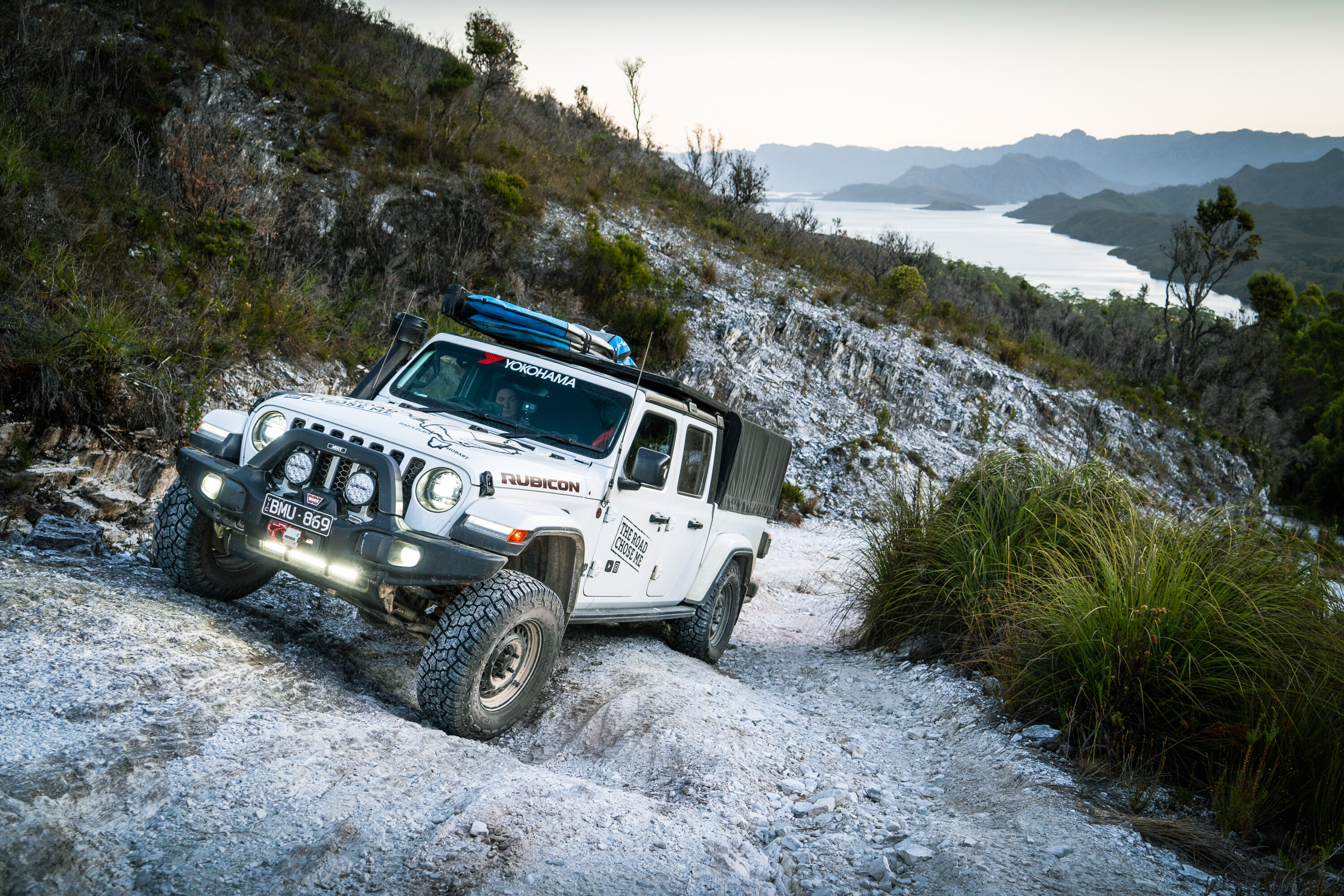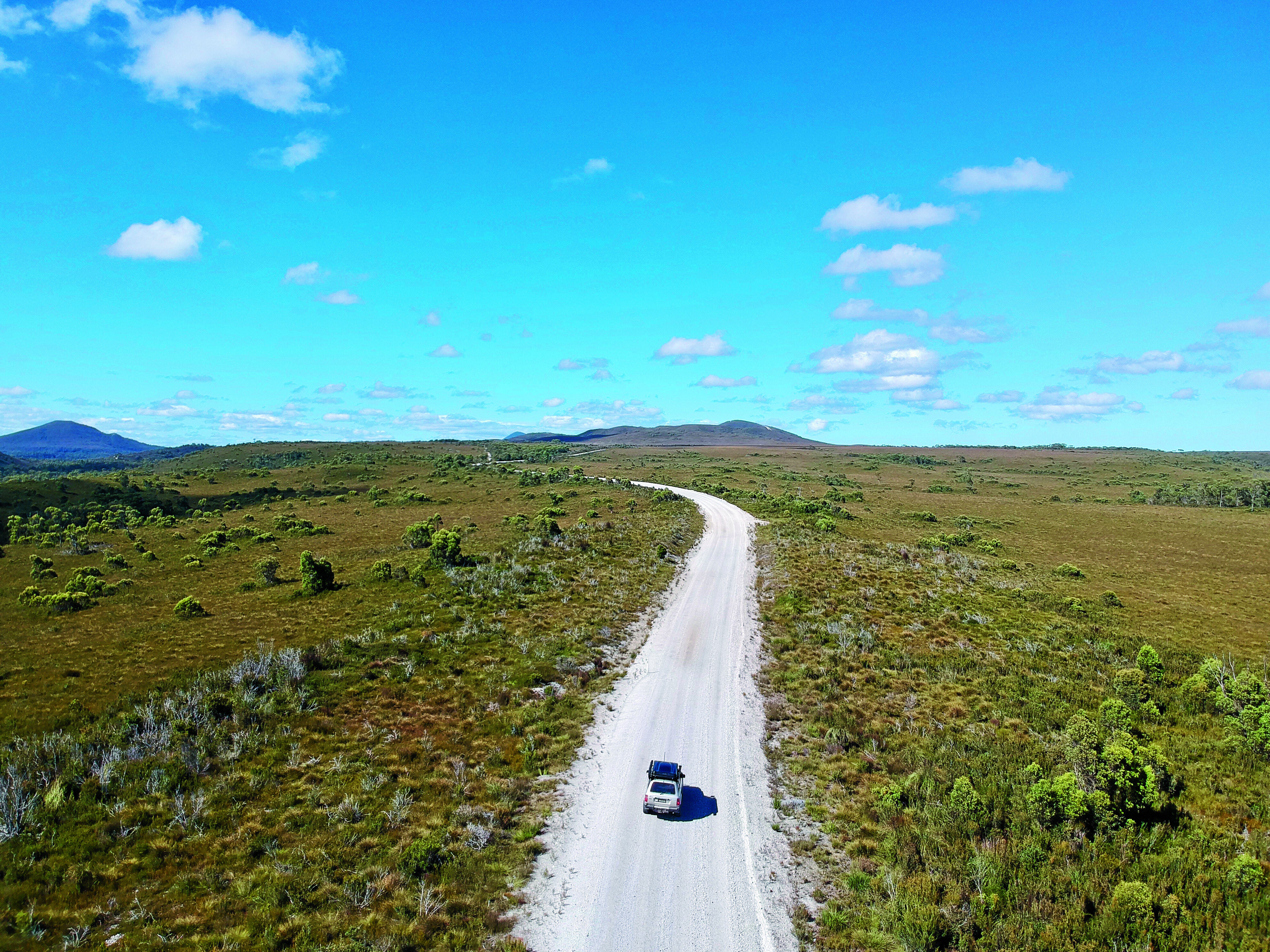The moon slowly rose in the sky, illuminating the clear waters of Jeanneret Beach along the Bay of Fires. It’s no wonder Lonely Planet has called the Bay of Fires, “the world’s top travel destination”.
This article was originally published in 4×4 Australia’s May 2012 issue.
Long stretches of white sandy beach with clear turquoise-blue water, surrounded by lichen-stained rocks, make for breathtaking scenery. The area owes its name to Captain Tobias Furneaux who spotted several fires along the coast in 1773. He was convinced the coast was densely populated and evidence of Aboriginal occupation can be found along the coast today.
If you’re keen on bush camping, you can set up your tent right next to the beach. Camping is free here – it is not often you are afforded multi-million dollar views without a multi-million dollar price-tag to contend with.
The shire of St Helens has a water tap in town where campers can fill up their water tanks and jerry cans. Add to this an excellent laundromat, with a café where you can have a cup of coffee while you wait, and you have the recipe for the perfect weekend getaway.
With six different camping areas from which to choose, there is room for everyone. The area at Jeanneret Beach is especially suitable for families with young children. The kids can play in the lovely soft sand and climb the rocks, while mum and dad laze around on the beach and enjoy the beauty of this stretch of coast.
For a bit of adventure, head north to Eddystone Point, Tasmania’s easternmost point.
This section of the Bay of Fires is in Mt William National Park. The lighthouse at Eddystone Point was built in 1889 and has incredible cliff-top views. The three lighthouse keepers’ cottages are occupied by Aboriginal people, so you may only admire the lodgings from a distance.
A short walking track to Abbotsbury beach leads visitors over the sand dunes to the coast. This stretch of coastline can be wild and treacherous, with the many shipwrecks off-shore attesting to this harsh reality.
Once you’ve seen the lighthouse, head back towards St Helens but don’t miss the turn-off to Anson’s Bay. The start of the track is almost directly opposite the turn-off to Deep Creek campground. A notice from the Ranger warns drivers to only attempt this track if they are experienced four-wheel drivers with a high-clearance 4X4. This is the starting point of a fantastic off-road experience, with plenty of challenges.
The track is just 8km long, but makes for an interesting drive and the ocean views are definitely worth it. Signs are non-existent along the track so it’s a matter of trial and error for those attempting to navigate their way along the route. After heavy rain, drivers will also have to contend with mud holes. All part of the dirty fun.
At the end of the track, you hit sealed road and follow the signs back to St Helens. The Bay of Fires truly is a top travel destination and the kind of place you need to experience for yourself, at least once in a lifetime.
Travel Planner
WHERE The Bay of Fires starts 10km north of St Helens (254km north-east of Hobart) and extends from Binalong Bay in the south to Eddystone Point in the north.
GETTING THERE St Helens can be accessed via the A3 from Hobart, Binalong Bay Road (C850) and a left turn onto C848 to The Gardens.
CAMPING There are numerous bush camping facilities along the Bay of Fires. Camping is free but sites are on a first-in, first-served basis. There are drop toilets. Maximum stay is four weeks. For enquiries, contact St Helens visitors information centre on 03 6376 1744.
WHAT TO BRING Drinking water. Fuel and groceries are available in St Helens.
MAPS Hema’s Tasmania Atlas & Guide and Tasmania Handy Map
THINGS TO DO Enjoy the white sandy beaches, a day in St Helens, explore the road up to The Gardens… or simply relax and do nothing.





